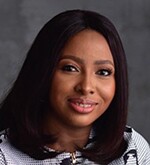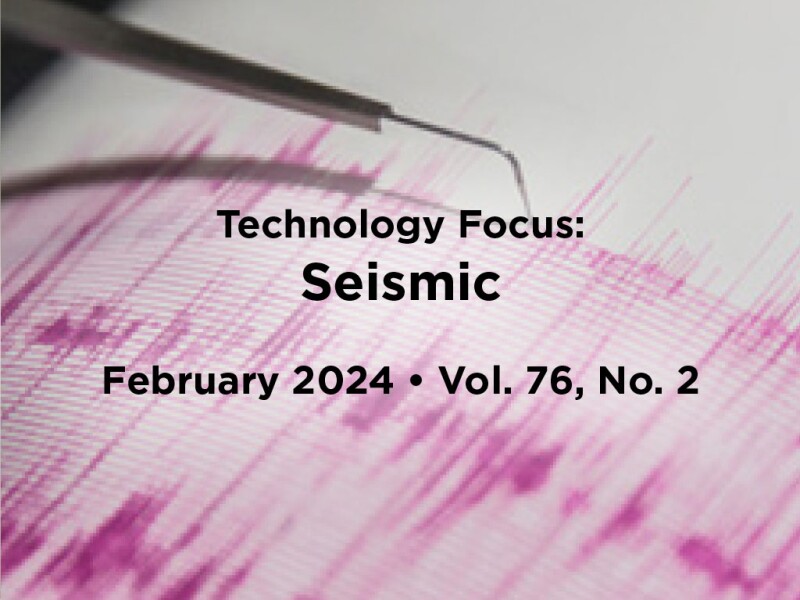2023 wrapped up nicely with COP28 in Dubai. The key highlights were the commitments by both governments and the private sector to zero-methane production by 2030, net-zero greenhouse gas emissions from operations by 2050, and triple renewable power-generation capacity and double energy efficiency in this decade. There has been tremendous progress on our collective journey toward cleaner energy production, and now we must take it a notch higher.
In the past couple of years, JPT’s Seismic feature has been marked by highly innovative seismic techniques and machine-learning work flows focused on reduction of carbon footprint; frontier exploration, expanding heartlands and brownfield development; and improved seismic survey, imaging, and attribute analysis for reservoir characterization and fracture diagnostics, which are in line with the COP28 pledges. This year’s feature is no different.
Recent technical-paper titles have further shown the steady increase in the application of advanced seismic techniques and machine learning to mature “stranded” and “advantaged” hydrocarbon-bearing accumulations to production; improve carbon capture, storage, and leak detection; and analyze naturally and artificially induced fractured reservoirs and seismicity. The selected papers are reflective of these themes.
In addition, some remarkable applications of seismic techniques are presented in the recommended papers. They include the following:
- 2D nonlinear seismic site response analyses used to determine if the capacity of a silty sedimentation could support the load of a pipeline end termination in the event of an earthquake
- The results of a pilot test of the Marine Vibrator, an industry-leading seismic-survey technique
- High-resolution modeling to infer if an increase in seismicity is caused by an increase in pore pressure from wastewater injection in the Fort Worth Basin of north central Texas
- 4D time/depth shifts and strain signals successfully used to estimate pressure depletion in the Gulf of Mexico
Others are applying advanced measurement and modeling techniques to optimally place a long horizontal injector well in multilayered heterogeneous sandstone reservoirs and predicting reservoir presence from seismic velocity and pore-pressure prediction.
These topics will supply the insights that will help us achieve the COP28 targets while we look forward to more exciting innovations in 2024.
This Month’s Technical Papers
Study Investigates Seismic Monitoring for Carbon Storage Leak Detection
Seismic Reprocessing Overcomes Uncertainty in Offshore Egyptian Field
Machine Learning Provides Fracture Analysis, Mapping for CCUS
Recommended Additional Reading
OTC 32267 Seismic Stability Assessment of a Mudmat on Liquefiable Seabed by Brian Carlton, Norwegian Geotechnical Institute, et al.
OTC 32393 Predicting Reservoir Presence From Seismic Velocity Mapping and Pore-Pressure Prediction by Matthew James Legg, Shell
OTC 32741 Marine Vibrator Milestone: A Pilot Seismic Survey by R. Alfaro, TotalEnergies, et al.
SPE 212951 High-Resolution Modeling of Pore-Pressure Change, Fault Slip Potential, and Induced Seismicity in the Fort Worth Basin by Changqing Yao, Texas A&M University, et al.
URTeC 3870451 Impact of Fracture Roughness on Fines Migration and Fracture-Aperture Growth in Calcareous Shale Rocks During Acidized Corefloods by Hasan J. Khan, King Fahd University of Petroleum and Minerals, et al.
Eudorah Ochai-Audu, SPE, is onshore exploration business opportunity manager and planning lead for Shell Nigeria. She holds an MS degree in petroleum geosciences from Royal Holloway, University of London, and is a professional with the Council of Nigeria Mining Engineers and Geoscientists. Ochai-Audu joined Shell in 2008 as a trainee geoscientist. Before her current role, she was a senior production seismologist with more than 13 years of experience in 3D seismic interpretation, static reservoir modeling, and operations geology, and has been involved in several field development plans, oil and gas reservoir evaluations, and field execution projects in Nigeria and the Middle East. One of Ochai-Audu’s greatest passions is talent development, with a strong interest in career coaching and mentoring for young professionals and students. She is a strong advocate for continuous improvement, knowledge sharing, and work simplification leveraging technology. Ochai-Audu is a member of the JPT Editorial Review Board.

